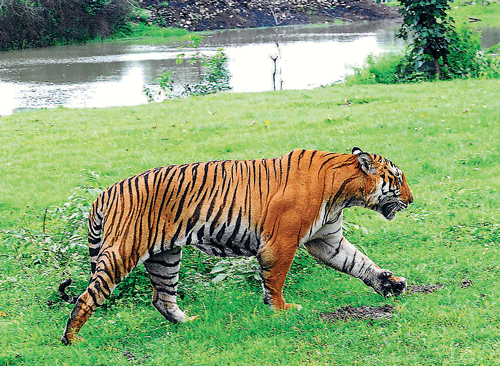
As many as 35 tigers have died across the State in the last three years, but the Forest department officials have still not been able to establish the cause of death in many of the cases.
Incidentally, the recent National Tiger Census has revealed that Karnataka has the largest tiger population—about 320—in the country.
According to statistics provided by the National Tiger Conservation Authority (NTCA), from December 2011 to April 2014, there have been 35 deaths, natural and unnatural. In cases where tigers were killed by poachers, the accused have been convicted in only one case so far, in the past three years.
“Of these 35 deaths reported, the Forest department has been unable to conclude the exact cause of death in most cases. Based on prima facie evidence, it is decided as natural and unnatural. But they are unable to ascertain the exact cause as cases are still being investigated. Another reason for the low conviction rate is that Forest department officials are unable to appropriately investigate the cases and collect evidence. This makes cases weak. There have also been instances where the Forest department officials are unable to co-ordinate with other departments like the police and the CBI,” NTCA sources said.
Adding to this, an official from the Ministry of Environment and Forests said that most of the tiger deaths had occurred outside forest areas but the Forest department concentrates more on protected areas. It is important to focus on areas outside the forests because animals stray out and get killed by poachers, in road accidents and even by agitated villagers, the official explained.
Praveen Bhargav, former member, National Board for Wildlife, said: “Intensive supervision by senior officers is a must to ensure quality and timely investigation. This, barring exceptions, is not happening despite stringent laws that give a lot of power to foresters. Also, attempts by some forest officials to cleverly duck scrutiny by trying to hand over cases to the already stretched police, and ludicrously even the CBI, should be curtailed. Public prosecutors with special knowledge of wildlife law must be identified and specially deputed to handle serious offences involving hunting and trade of Schedule One animals, and lastly capacity in wildlife forensics needs to be strengthened.”
Reacting to this, Principal Chief Conservator of Forests (Wildlife) Vinay Luthra said that conviction took time as there were many parameters to be followed, and in the case of tigers, it takes longer. '
“Whatever conviction come to light now is of earlier cases, and in the present cases, investigation is underway. There are no cases which are not reported and noticed by the department and NTCA,” he added.